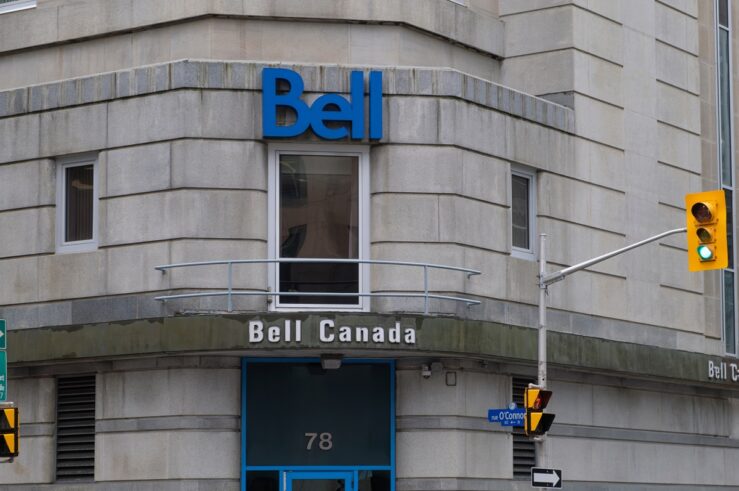Reacting to the EU fines imposed on Intel, Geoff raises a nice point about the difficulty of constructing the but-for world in antitrust cases generally, but particularly in cases where prices are falling. This discussion reminded me of Thom’s excellent post responding to the NYT editorial and an AAI working paper and putting theoretical anticompetitive concerns to an empirical test and discussing evidence of falling prices for both Intel and AMD products and increased operating margins for AMD. So how are we to sensibly evaluate the EU decision?
To make some progress here, let’s all agree for the sake of discussion that there are logically valid anticompetitive theories of loyalty discounts, exclusive dealing contracts, and conditional rebates generally and that there are valid and sensible pro-competitive justifications for these types of distribution contracts as well. And lets also assume for the sake of analysis that it makes analytical sense to consider the possibility that the loyalty rebates operate like exclusive dealing contracts and that therefore the competitive concern is that the contracts will deprive AMD of the opportunity to compete for distribution sufficent to achieve minimum efficient scale — thus creating the possibility of future harm from a theoretical perspective. And finally, without making any contentious statements about the empirical literature, lets assume that it is a fair characterization (and I think this is mild) to say that there is evidence both that there is evidence both that firms without market power frequenty use exclusive dealing contracts and or similar loyalty rebate schemes and that evidence of anticompetitive exclusive dealing is scarce.
Given all of the above, lets look at the loyalty rebate problem through the error cost lens. The Intel case is a perfect example for application of this approach because even the most interventionist antitrust thinkers do not debate the proposition that lower prices have some redeeming competitive qualities and generate consumer benefits. So it makes sense to think about the tradeoffs here between what we expect to gain from a decision like the EU’s (or here in the US) versus what we expect to lose. The error cost framework allows us to assess these tradeoffs objectively, relying on existing theory and evidence to inform our estimates. Here is what I wrote in my post during the Section 2 Symposium on this exact issue:
The situation antitrust enforcers find themselves in with respect to exclusive dealing is not unfamiliar. On the one hand, there are a set of possibility theorems which indicate that exclusive dealing and de facto exclusives can lead to anticompetitive outcomes under some specified conditions, including substantial economies of scale or scope. On the other, there are a set of sensible and economically rigorous pro-competitive justifications for the practice. On top of that is the casual empiricism that we observe exclusive dealing contracts in competitive markets and adopted by firms without significant market power. As David Evans noted on the first day of our symposium, quite a bit can be learned about the relative probabilities of anticompetitive and pro-competitive uses of certain types of business behavior by understanding the incidence of use by competitive firms. Exclusive dealing is no different.
The same analysis applies to loyalty rebates:
The key points here from an evidence-based perpsective are both that we have little empirical evidence that loyalty discounts lead to anticompetitive outcomes, but we do know that the discounts are passed on to consumers and increase welfare. Like exclusive dealing, this state of knowledge ought to lead to a liability rule that places a strong burden on the plaintiff to demonstrate actual competitive harm, and safe harbors based on sound theory and evidence where they can be crafted reasonably. In this case, since the anticompetitive theories all require foreclosure of a significant share of distribution and substantial economies of scale, it is quite sensible in the case of loyalty discounts to allow defendant’s a safe harbor that would make per se legal loyalty discount programs that foreclose less than a pre-specified share of the retail/distribution market. I believe the right starting point for such a safe harbor comes from the cases, and could be set at 40 percent. But building on the DOJ’s analysis, the argument can and should be made that the exclusive dealing safe harbor logically can and should apply to loyalty discounts as well.
Of course, the EU approach does not make room for such safe harbors. Not even close. To describe the EU approach to Intel’s loyalty rebates as either remotely “effects-based” or “evidence-based” would strip both those terms of any useful meaning. But that’s not an incredibly interesting point. It does not appear that the EU approach is going to change any time soon. Nor does it appear that there will be any pressure placed on the Europeans from domestic agencies (in fact, the pressure appears to moving in the opposite direction to “do something”). By the way, for all the criticism that Tom Barnett at DOJ took for criticizing the EU Microsoft decision a few years back, at least that approach had the benefit of informing US companies that they would not adopt the European approach, and that US law was importantly different because it required a more rigorous form of economic analysis and more substantial evidence of consumer harm rather than speculative possiblity theorems coupled with harm to competitors. That is a message that I’m quite sure the business community in the United States would be interested in hearing today from the US agencies. And rightly so. Thom is right that these developments give antitrust academics a lot to do! Its a very exciting time for antitrust.
But that’s generally a bad sign for companies in high tech markets with significant market shares who are facing some pretty scary times. On the one hand, the EU has sent the signal that competitors who can’t quite cut it in product market competition and innovation can get a second bite at the apple by running to the friendliest regulator around for help in tying a competitor’s hand behind its back. I imagine that another concern is that the messages sent collectively by the FTC and “new” DOJ in repudiating the Section 2 Report and that error costs are hereby assumed out of existence raise the possibility that there will be a competitive dynamic between the EU and US to see who will be the global monopolization policeman — and also between the FTC and DOJ.
But what is more interesting to me is to watch how this will play out in th United States. Long before the Section 2 Report scuffle I predicted that we might be headed toward a sort of convergence where rather than the EU moving to a more US-based approach, the US went the other way. That looks like a much more likely possibility today than it did a few weeks ago. So what’s going to happen in the US?
Nellie Kroes recently made the statement that Intel, after the recent fines, is now “the sponsor of the European taxpayer.” Cute. But given the fears that the EU is using antitrust law as a protectionist weapon, this statement was not well advised and I hope catches the attention of the new antitrust regimes in the U.S. (including new AAG Christine Varney, who could have had something like the Intel decision in mind when she described the European approach to monopolization as “much more extreme than I would ever be“). Bottom line: I wouldn’t quite celebrate the new sponsorship if I were a European taxpayer (nor as an American one) who was planning on buying products with microprocessors any time in the near future. The most likely consequence of the EU’s action is going to be higher prices.
Take a look at these pictures, which I suspect matter a great deal more in the US than the EU in terms of the antitrust analysis. Given the complexities of predicting the speculative welfare gains from the EU’s enforcement action against the more certain gains from lower prices, would Kroes really bet against intervention ultimately increasing prices to consumers? I think the pictures below tell a story that begs the following question of Kroes, and the folks at the AAI who issued a press release prematurely celebrating the EU fines as a victory for consumers and calling for the FTC to get in the action:
(1) How confident are enforcers that the but for world would result in an increase in consumer welfare? For example, what probability would they assign to the prediction that EU intervention will result in lower prices for consumers?
(2) On what basis is that belief formed? are they consistent with the existing empirical evidence?
(3) What probability to the enforcers assign to the likelihood that the contracts actually are pro-competitive and so the enforcement action will create some consumer losses?
[Ed – Sorry the pictures are fuzzy — I’ll get better ones up. But suffice it to say for now that the steeply declining yellow line is Intel microprocessor prices and the four lines in the second picture (also declining fairly quickly) are Intel and AMD prices. Source data from pricescan.com]


This leads me to my last point about what happens now in the US. I’m quoted in the WSJ as saying that I believe it is much more likely that the US gets involved in the Intel litigation than was the case two weeks ago. Its hard to avoid that conclusion after reading the combination of statements from the FTC on the repudiation of the Section 2 Report, the new life of Section 5, as well as the competitive pressures placed on that agency from the DOJ’s new agenda and the EU fines.
The problem is that the content of the Section 2 Report was not just policy statements from the Bush administration political appointees about what the Section 2 should be. It was a serious project with engagement from DOJ and FTC appointees, staffers, the academic community, and business representatives to summarize the existing law and existing evidence as well as generate some guidance on best practices where available. Turns out that with two years to work on the project and that breadth of resources and diversity of viewpoints, the Section 2 Report really does accurately state the law with respect to exclusive dealing, predatory pricing, loyalty rebates, and such. And that law isn’t going anywhere. Perhaps the mission of the new DOJ and FTC will be to change the law? Or perhaps the FTC will avoid the unfavorable Section 2 law by substituting Section 5 for cases like Intel where they are unlikely to win under a Section 2 theory. But the Supreme Court and the federal case law under Section 2 remain substantial obstacles to convergence that extends beyond the hallways of the agencies.




